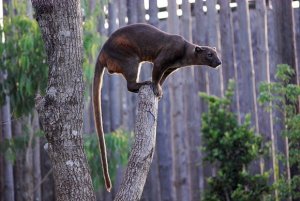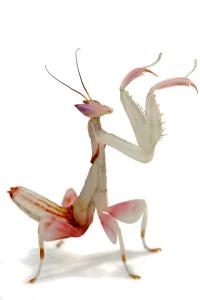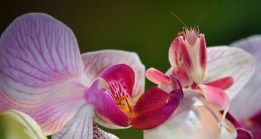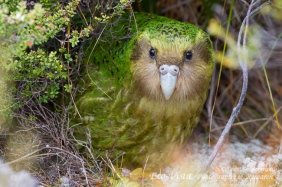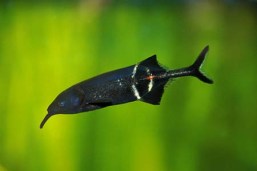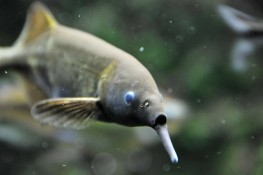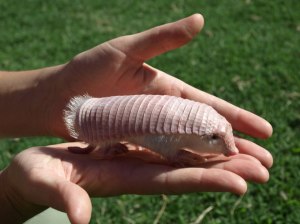One of the most beautiful things about the animal kingdom, is its limitless diversity. Creatures on this planet come in every shape, size, texture and temperament. One of the most enchanting things I’ve been lucky enough to see, is the look of wonderment and curiosity on a persons face when they witness a creature they’ve never seen before. I decided to write this blog, in the hopes that I will introduce people to species they’ve never been exposed to before, and encourage them to learn more about about the fauna of the planet. So here are my top 10 favourite, most obscure and beautiful creatures on this planet. Happy reading!!
- Fossa (Cryptoprocta ferox)
Pronounced “foo-sa“
The fossa is a mammal, related to the mongoose, that is only found in the forests of Madagascar. They can grow up to 2m in length and weigh up to 12kg. Lemurs are the main component of it’s carnivorous diet but it has been known to catch and eat fish, birds, reptiles and other small mammals. It is a solitary animal and an agile climber. This species featured in the 2005 animated movie “Madagascar”, although it wasn’t portrayed in a very positive light. The fossa is classified as an endangered species due to the deforestation occurring in its native home.
2.California Condor (Gymnogyps californianus)
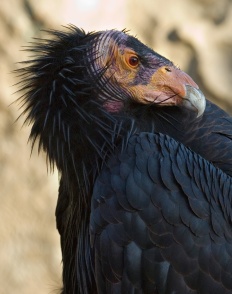
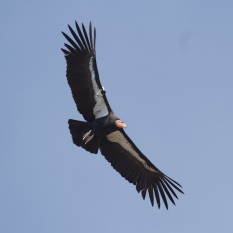
The California Condor is a new world vulture native to North America. It is a scavenger, feeding on huge amounts of carrion. It has a massive wingspan of up to 10ft and a lengthy lifespan of about 60 years. At one point in the eighties, only twenty two of these majestic creatures remained in the wild. Through captive breeding programmes and reintroduction into the wild, there are almost five hundred of these condors today (including those held in captivity). Although the population is steadily increasing, these are still listed as critically endangered by the IUCN and are still threatened by poaching, habitat destruction and lead poisoning.
3. Brookesia Micra (Brookesia micra)

This minuscule little lizard is a very recent discovery. In the past, it was often mistaken for another species of chameleon and didn’t get it’s own scientific name until 2012. It is the smallest of the chameleon family and is found among the leaf litter on a tiny island off the coast of Madagascar. It usually doesn’t grow more than about 30mm in length, making it one of the world’s tiniest reptiles. The small area in which it lives is subject to illegal logging and experts predict that this species could be especially sensitive to habitat destruction. Unfortunately, if the deforestation in this area continues, this newly discovered little creature may not last much longer.
4. Ocean Sunfish (Mola mola)
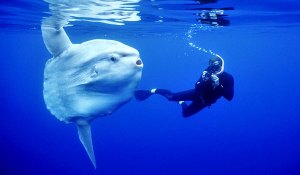
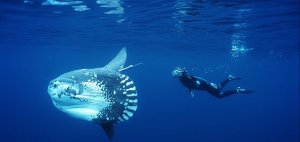
The Ocean Sunfish is the largest bony fish known to man. Specimens have been found measuring almost 10ft in length and weighing more than 2200kg. They vary in colour from white, silver and gray, to brown and spotted. The Ocean Sunfish can be found in both temperate and tropical waters, worldwide, although they are very difficult to keep in captivity, so most people have never been lucky enough to see one. It feeds primarily on jellyfish but has also been known to eat other small sea creatures including fish, molluscs and plankton. Despite their gargantuan size, these are a gentle giant and pose no threat to humans.
5. Orchid Mantis (Hymenopus coronatus)
This beautiful insect is found in the forests of South East Asia. Adult females usually grow to a length of between 6-7 cm, dwarfing the adult males, averaging at a length of 2.5 cm. Because of the size difference in sexes, cannibalism is common, especially after mating. The mantis’ colouration and the shape of it’s legs resembles flower petals (hence the name Orchid Mantis). Scientists initially believed that this uncanny resemblance was a camouflage for protection against predators, However, through further studies, it was discovered that this mimicry evolved to allow the mantis to attract prey i.e. insects. This is the first scientific discovery of an animal mimicking a flower in order to lure in it’s prey.
6. Matschie’s Tree Kangaroo (Dendrolagus matschiei)

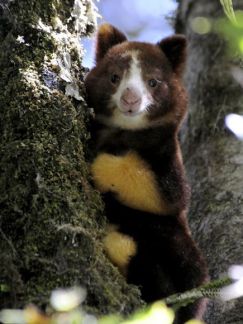
The Matschie’s Tree Kangaroo is one of fourteen species of tree kangaroo. It is a Macropod (plant-eating marsupial) that can be found high in the mountainous cloud forests of North Eastern Papua New Guinea. It is known to grow to about 180 cm in length (including tail) and weight approx. 10 kg. They feed primarily on leaves, fruits and mosses in the wild and are mostly solitary animals. As their name suggests, they spend most of their time in the trees but come down occasionally to eat grasses. This adorable species is now listed as endangered due to habitat destruction and over hunting by locals for their meat and fur.
7. Kakapo (Strigops habroptilus)
The Kakapo is, by far, both the strangest and rarest parrot on the planet. Found only in New Zealand, it can weigh up to 3.5 kg and has a life expectancy of over 90 years. It is both nocturnal and flightless. It has very fine, soft feathers as they do not have to be strong enough to support flight. Even though the Kakapo does not fly, it is a great hiker and climber and uses it’s wings in a parachute-like fashion when jumping out of trees. Their one and only defence mechanism, is to freeze when startled. Although this is an effective technique used against birds of prey, when carnivorous mammals began being introduced to the islands, the kakapo had no way of defending itself. This beautiful, unusual bird is critically endangered, with less than 150 remaining in the wild. A fantastic recovery programme is in place to help bring back this species from the brink of extinction. There is a great video featuring Stephen Fry and Mark Cawardine, and of course the adorable kakapo which you can watch here to see just how cute they are.
8. Matamata Turtle (Chelus fimbriatus)
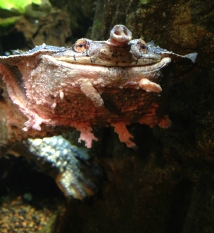
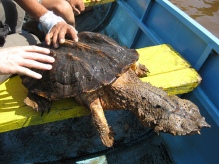
Despite it’s misleading name, the Matamata turtle is NOT from the rural town of Mata mata, New Zealand, but is in fact found in the Amazon and Orinoco rivers of South America. This turtle has been renamed by scientists more than 14 times in the last 200 years. Their carapace (shell) can measure up to 45 cm in diameter and they can weigh up to 15 kg. This is a very unique turtle and is the only species in it’s genus. It’s long neck (longer than it’s vertabra) acts as a sort of snorkel, while it’s pointy little snout can come up for air, as the turtle still sits on the river bed. It prefers calm, slow moving waters to crawl around in, as it doesn’t swim or bask much. It also has a unique method of catching prey. Most species will rapidly extend their neck before snapping up prey, but not the Mata mata. This turtle sucks up prey (which consists mainly of small fish) in a sort of vacuum fashion.
9. Elephantnose Fish (Gnathonemus petersii)
The Elephantnose is a nocturnal, fresh water fish with a wide distribution across Africa. It is mostly found in heavily vegetated, slow moving, muddy rivers and grows to about 25 cm in length. This fish has the largest brain:body weight ratio of any known vertebrate, and it is highly intelligent. It has been proven that the brain is responsible for approx. 60% of it’s oxygen consumption (compared to about 20% in humans and 2-8% in other fish). This species is covered in electro-receptors and uses a weak electrical field to find prey, navigate, communicate and find a mate. It is not uncommon to find these in a home aquaria, however most are kept in incorrect conditions, not allowing them to thrive.
10. Pink Fairy Armadillo (Chlamyphorus truncatus)

The Pink Fairy Armadillo is the smallest of the armadillo family, measuring between 9 and 12 cm long. It is found in the dry plains of Argentina and is a great digger, with the ability to completely bury itself in a matter of seconds. This animals tail acts almost as an extra leg, providing stability when digging with it’s powerful claws.It’s diet includes insects, worms, snails and even some plants. This strange little critter is rarely seen and remains practically unstudied.
Hopefully, through reading this you’ve learnt a few things about these bizarre, yet beautiful creatures. We often forget how extensive the animal kingdom is, and how much we have yet to learn.
Thanks for stopping by,
P.


